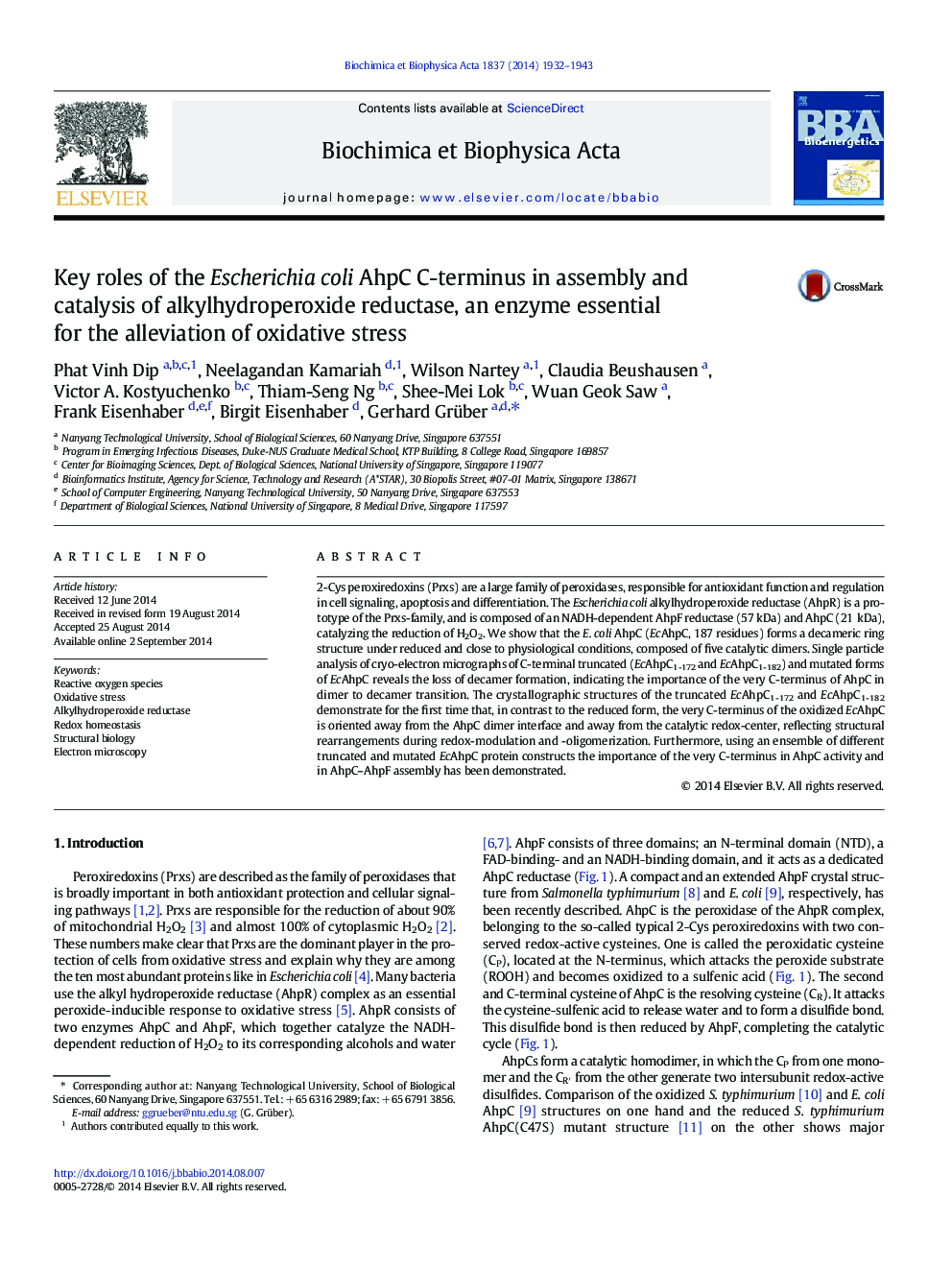| Article ID | Journal | Published Year | Pages | File Type |
|---|---|---|---|---|
| 8298759 | Biochimica et Biophysica Acta (BBA) - Bioenergetics | 2014 | 12 Pages |
Abstract
2-Cys peroxiredoxins (Prxs) are a large family of peroxidases, responsible for antioxidant function and regulation in cell signaling, apoptosis and differentiation. The Escherichia coli alkylhydroperoxide reductase (AhpR) is a prototype of the Prxs-family, and is composed of an NADH-dependent AhpF reductase (57Â kDa) and AhpC (21Â kDa), catalyzing the reduction of H2O2. We show that the E. coli AhpC (EcAhpC, 187 residues) forms a decameric ring structure under reduced and close to physiological conditions, composed of five catalytic dimers. Single particle analysis of cryo-electron micrographs of C-terminal truncated (EcAhpC1Â -172 and EcAhpC1Â -182) and mutated forms of EcAhpC reveals the loss of decamer formation, indicating the importance of the very C-terminus of AhpC in dimer to decamer transition. The crystallographic structures of the truncated EcAhpC1Â -172 and EcAhpC1Â -182 demonstrate for the first time that, in contrast to the reduced form, the very C-terminus of the oxidized EcAhpC is oriented away from the AhpC dimer interface and away from the catalytic redox-center, reflecting structural rearrangements during redox-modulation and -oligomerization. Furthermore, using an ensemble of different truncated and mutated EcAhpC protein constructs the importance of the very C-terminus in AhpC activity and in AhpC-AhpF assembly has been demonstrated.
Keywords
Related Topics
Life Sciences
Agricultural and Biological Sciences
Plant Science
Authors
Phat Vinh Dip, Neelagandan Kamariah, Wilson Nartey, Claudia Beushausen, Victor A. Kostyuchenko, Thiam-Seng Ng, Shee-Mei Lok, Wuan Geok Saw, Frank Eisenhaber, Birgit Eisenhaber, Gerhard Grüber,
